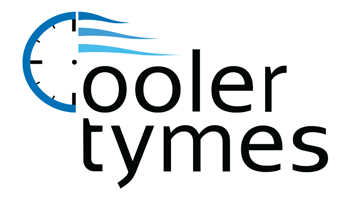
You shouldn’t have to give up comfort or empty your wallet to keep your home at a pleasant temp during warm days.
But what is the ideal setting, exactly? We go over recommendations from energy professionals so you can choose the best temperature for your family.
Here’s what we recommend for the most energy-efficient setting for air conditioning in Litchfield Park.
Recommended Thermostat Settings for Summer
Most people find placing the thermostat at 72-73 degrees provides ideal comfort. However, if there’s a big difference between your inside and outside temps, your electricity expenses will be greater.
These are our suggestions based on the U.S. Department of Energy (DOE) and ENERGY STAR®.
While at home: 78 degrees. While that seems hot, there are ways you can keep your residence refreshing without having the air conditioning running all the time.
Keeping windows and blinds shut during the day keeps chilled air where it should be—indoors. Some window treatments, like honeycomb shades or plantation shutters, are made to provide added insulation and better energy efficiency.
If you have ceiling fans in your home, the DOE says you can raise thermostat temps about 4 degrees hotter without compromising comfort. That’s due to the fact they freshen with a windchill effect. As they cool people, not spaces, shut them off when you leave a room.
If 78 degrees still seems too hot at first glance, try doing a test for a week or so. Start by increasing your setting to 78 degrees while you’re home. Then, steadily lower it while adhering to the ideas above. You may be astonished at how comfortable you feel at a hotter temperature setting.
While away: 88 degrees. There’s no reason to keep the air conditioner working all day while your house is vacant. Switching the temperature 7–10 degrees higher can save you an estimated 5–15% on your AC expenses, according to the DOE.
When you arrive home, don’t be tempted to switch your thermostat colder than 78 to cool your residence more quickly. This isn’t effective and often results in a bigger electrical cost.
A programmable thermostat is a helpful approach to keep your temp in check, but you have to set programs. If you don’t utilize programs, you might forget to change the set temperature when you go.
If you’re looking for a convenient solution, consider getting a smart thermostat. This thermostat links with your phone, so it is aware when you’re at home and when you’re away. Then it automatically modifies temperature settings for the biggest savings. How much exactly? About $180 yearly on heating and cooling, according to ENERGY STAR.
Another benefit of installing a smart thermostat? You can use your phone to monitor and change temperature settings from almost anywhere.
While sleeping: Around 70 degrees. While ENERGY STAR advises 82 degrees, that may be unbearable for many families. Most people sleep better when their bedroom is chilled, so that’s why the National Sleep Foundation suggests 60–67 degrees. But that could be too cool, based on your pajama and blanket preference.
We recommend using a similar test over a week, moving your temp higher and progressively turning it down to locate the right temp for your house. On pleasant nights, you might learn keeping windows open at night and relying on a ceiling fan is a preferable solution than running the AC.
More Methods to Conserve Energy During Hot Weather
There are additional ways you can conserve money on utility bills throughout hot weather.
- Install an energy-efficient air conditioning system. Central air conditioners only work for about 12–15 years and become less efficient as they age. An upgraded air conditioner can keep your home comfier while keeping electrical expenses down.
- Book annual air conditioner tune-ups. Regular air conditioner maintenance keeps your system working like it should and might help it work at greater efficiency. It could also help prolong its life span, since it allows technicians to uncover small issues before they create a major meltdown.
- Replace air filters regularly. Use manufacturer instructions for changing your air filter. A dusty filter can result in your system short cycling, or switch on and off too often, and increase your electrical.
- Measure attic insulation levels. Nearly 90% of residences in the USA don’t have proper insulation, according to the Insulation Institute. The majority of southern climates require 13–14” of attic insulation, while northern climates need 16–18”.
- Have your ductwork inspected. Ductwork that has separated over time can let cold air into your attic, walls or crawl space. This can create big comfort problems in your house, like hot and cold spots.
- Seal holes, doors and windows. Keep humid air where it should be by plugging cracks. You can also caulk or weather strip doors to trap more conditioned air within your home.
Conserve More Energy During Hot Weather with Cooler Tymes LLC
If you want to conserve more energy during hot weather, our Cooler Tymes LLC experts can help. Reach us at 623-208-6444 or contact us online for additional info about our energy-saving cooling solutions.
